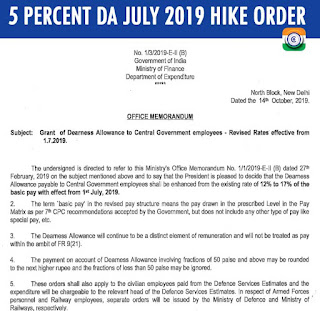7th Pay Commission Latest News – Difference in
Economical Conditions now and when 6CPC implemented – Article published
in Business Today compares the present fiscal scenario and in 2008 when
6th Pay Commission recommendations were implemented by Govt
Various parameters such as fiscal deficit, current account deficit, foreign investment in govt bonds growth in GDP etc shows that of Economic Conditions now are better than 2008, the year when 6th CPC Pay was granted.
7th Pay Commission latest news - Present economic condition7th Pay Commission Latest News – Global financial services major UBS in a report said investors are complacent about any potential change in India’s policy framework, especially in the backdrop of 7th Central Pay Commission. The brokerage expects CPC to negatively impact government’s fiscal consolidation path and sees states to face bigger impact.
“Impact of CPC on Central government’s fiscal is likely 0.4 per cent of GDP, which many investors viewed as not a big deal. The impact is however much bigger on states (over 1.1 per cent of GDP),” said UBS in a report.
UBS added that its baseline scenario is of a staggered, delayed or diluted implementation of CPC, but also said that any delay or dilution to CPC would be a negative surprise for specific sectors and stocks.
The report further noted that consumption boost is not guaranteed even with CPC, neither is it surely sustainable beyond 2-3 quarters.
The brokerage pointed out following five reasons that make macro backdrop in 2016 look very different from that of 2008, the last time India adopted Central Pay Commission (CPC) and expanded fiscally:
The global brokerage sees year-end Nifty target in 2016 at 8,200 level, which offers better risk-reward post recent correction. Its downside scenario implies end-2016 Nifty of 7,000.
Source: Business Today
Various parameters such as fiscal deficit, current account deficit, foreign investment in govt bonds growth in GDP etc shows that of Economic Conditions now are better than 2008, the year when 6th CPC Pay was granted.
7th Pay Commission latest news - Present economic condition7th Pay Commission Latest News – Global financial services major UBS in a report said investors are complacent about any potential change in India’s policy framework, especially in the backdrop of 7th Central Pay Commission. The brokerage expects CPC to negatively impact government’s fiscal consolidation path and sees states to face bigger impact.
“Impact of CPC on Central government’s fiscal is likely 0.4 per cent of GDP, which many investors viewed as not a big deal. The impact is however much bigger on states (over 1.1 per cent of GDP),” said UBS in a report.
UBS added that its baseline scenario is of a staggered, delayed or diluted implementation of CPC, but also said that any delay or dilution to CPC would be a negative surprise for specific sectors and stocks.
The report further noted that consumption boost is not guaranteed even with CPC, neither is it surely sustainable beyond 2-3 quarters.
The brokerage pointed out following five reasons that make macro backdrop in 2016 look very different from that of 2008, the last time India adopted Central Pay Commission (CPC) and expanded fiscally:
- Fiscal deficit: Country’s central fiscal deficit was at 2.6 per cent as compared to 4.1 per cent in 2016, while combined fiscal deficit in 2008 came in at 4 per cent versus 6.3 per cent in 2016.
- Current account deficit: CAD widening was financed easily in 2008 given improving global liquidity or risk appetite, although current environment doesn’t appear to be as conducive.
- International investors: Global investors invested heavily in government bonds. They were 1/10th of the $30 billion now. They arguably care more for macro stability vs near-term growth.
- GDP growth was slowing: GDP growth was not only slowing but also was ruling below trend versus a recovering (albeit slower than expected) economy now;
- Election scenario: Lok Sabha election was in 2009, while next one is due in 2019.
The global brokerage sees year-end Nifty target in 2016 at 8,200 level, which offers better risk-reward post recent correction. Its downside scenario implies end-2016 Nifty of 7,000.
Source: Business Today











0 comments:
Post a Comment